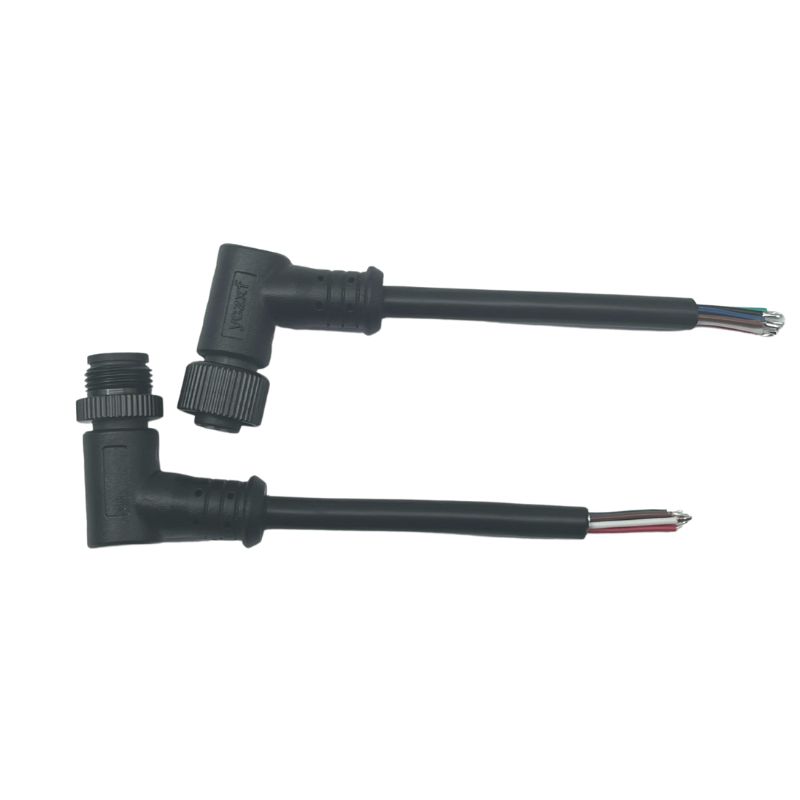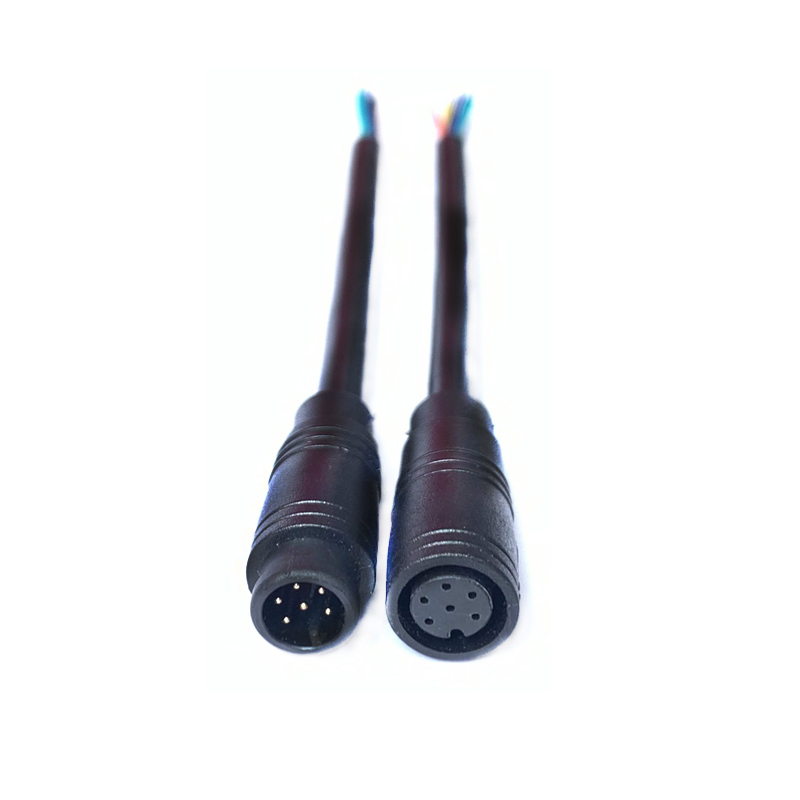News


News

Key Considerations for 6-Pin Waterproof Connectors in Automotive Applications
Release time:2025-04-24
viewed:316
In automotive electronics, 6-pin waterproof connectors are critical components for sensors, control modules, lighting systems, and charging interfaces. Their reliability directly impacts vehicle safety and longevity, especially under harsh conditions like vibration, temperature extremes, oil exposure, and salt spray. This guide outlines essential factors to ensure optimal performance of 6-pin waterproof connectors for automobiles.

IP67: Suitable for areas with temporary water exposure (e.g., door wiring harnesses, roof lights).
IP68/IP69K: Required for components exposed to prolonged water immersion, oil, or high-pressure washing (e.g., engine compartments, underbody sensors, charging ports).
Multi-Layer Seals: Prioritize connectors with silicone O-rings combined with injection-molded seals.
Anti-Capillary Design: Prevent water ingress through cable jackets by using heat-shrink tubing or overmolded cable exits.
Case Study: An electric vehicle charging port failed due to water ingress after high-pressure washing. After switching to IP69K-rated connectors, the failure rate dropped by 90%.
High-Temperature Areas (Engine Compartment): Use heat-resistant nylon (PA66-GF30) or PPS (polyphenylene sulfide), rated for -40°C to +150°C.
Corrosive Environments (Coastal/De-Icing Agents): Opt for stainless steel housings (e.g., 316L) or nickel-plated aluminum.
Gold Plating (0.5–1µm): For signal pins to reduce contact resistance (<5mΩ) and prevent oxidation.
Tin or Silver Plating: Cost-effective for power pins but requires regular oxidation checks.
Secondary Locking Mechanism (CPA): Prevents plug disengagement under vibration .
Cable Fixation: Use connectors with integrated cable clamps or flexible conduits to minimize cable movement.
Mating Force: 20–50N recommended (too loose risks disconnection; too tight hampers usability).
Mating Cycles: ≥500 cycles for engine bay components; ≥100 cycles for door/seat connectors.
Power Pins: Select wire cross-sectional area based on load (e.g., 1.5mm² wire for 10A current).
Signal Pins: Shielded designs for CAN/LIN buses with impedance matching (e.g., 120Ω for CAN).
Metal Shielding: Essential for high-frequency signals (e.g., radar, cameras).
Dedicated Ground Pin: Provides a low-impedance grounding path for shielding layers.
Note: Maintain ≥2mm spacing between power and signal pins to avoid crosstalk.

Terminal Crimping: Use professional crimping tools (e.g., Knipex) to avoid wire damage.
Seal Lubrication: Apply silicone grease (e.g., Dow Corning DC4) to O-rings to prevent distortion during installation.
Torque Control: Follow manufacturer specifications (e.g., 1.2–1.5N·m for M12 threaded connectors).
Regular Inspections: Check seal elasticity and contact oxidation every 2 years or 50,000 km.
Cleaning Method: Clean contacts with ethanol swabs; avoid abrasive cleaners.
Automotive Electronics: USCAR-2 (electrical performance), USCAR-25 (vibration testing).
Global Markets: CE (EU), AEC-Q200 (component reliability).
Anti-Mismatch Design: Choose connectors with key slots or color coding.
Tool Compatibility: Ensure terminals match standard crimping tools.
Causes: Oxidized or contaminated contacts, plating wear.
Solutions: Clean contacts with ethanol; replace with gold-plated terminals for long-term reliability.
Causes: Aged or misaligned O-rings, poor cable entry sealing.
Solutions: Replace seals with OEM parts; use injection-molded cable exits.
Causes: Vibration-induced locking mechanism failure.
Solutions: Upgrade to CPA-locked connectors; add cable ties or clamps.
Causes: Unshielded cables or poor grounding.
Solutions: Use metal-shielded connectors; ensure 360° shield contact.
Perform contact resistance tests (<10mΩ) every 12 months or 20,000 km.
In harsh environments (e.g., coastal or mining areas), inspect seals and locks every 6 months.
The reliability of 6-pin waterproof connectors for automobiles depends on waterproof ratings, material durability, anti-vibration design, and compliance with industry standards. By following these guidelines, automotive engineers can significantly reduce failures and extend the lifespan of critical systems.